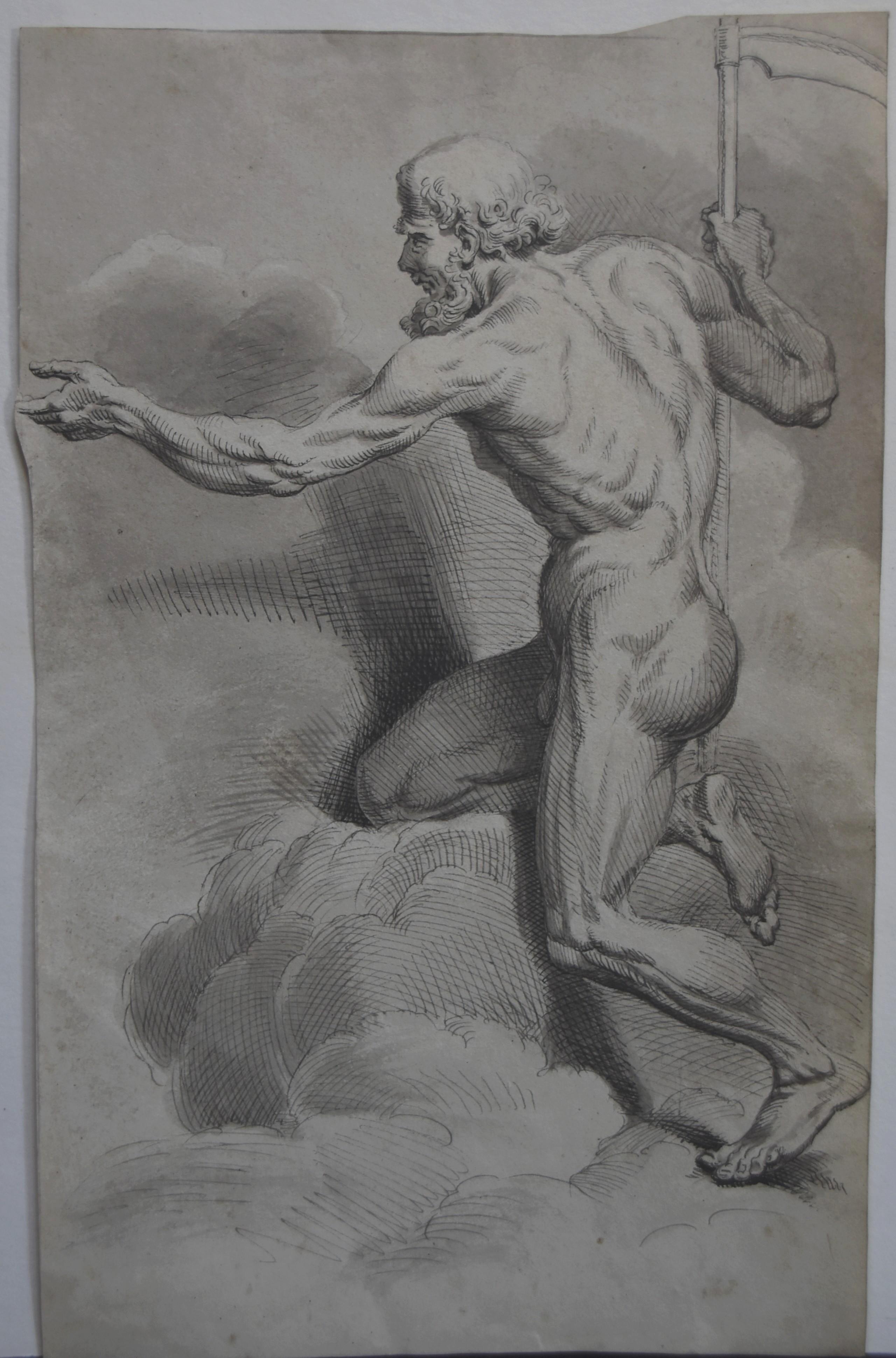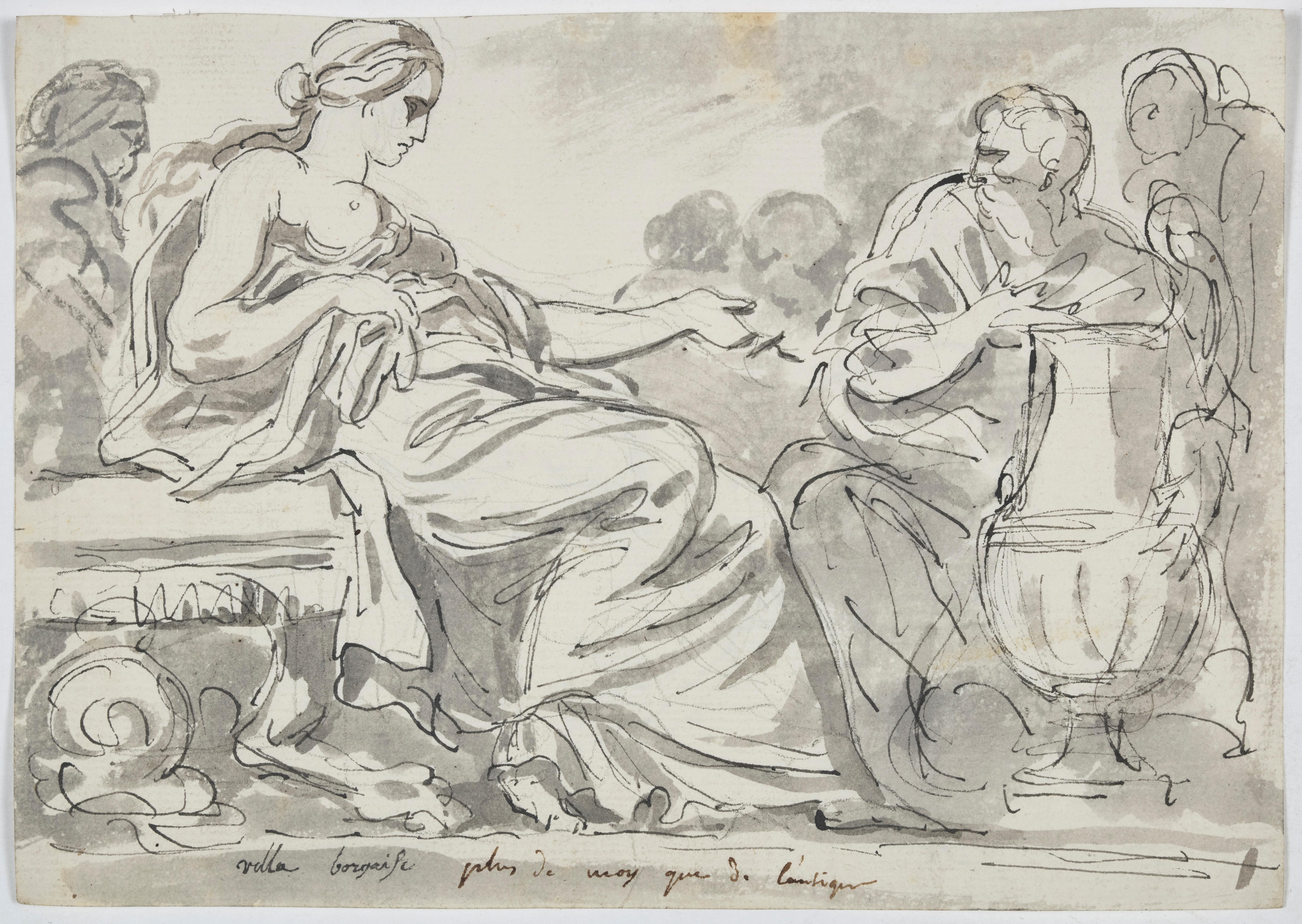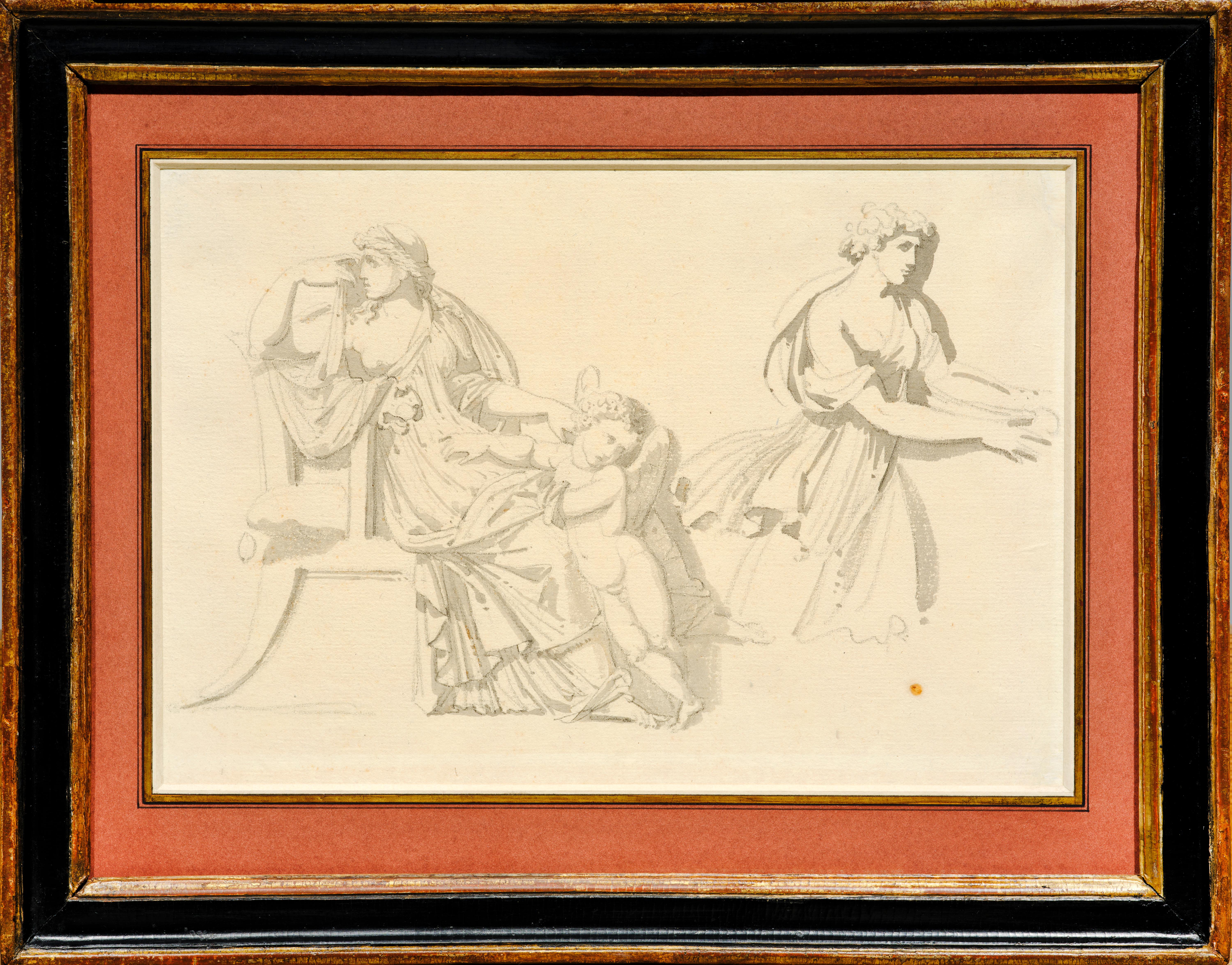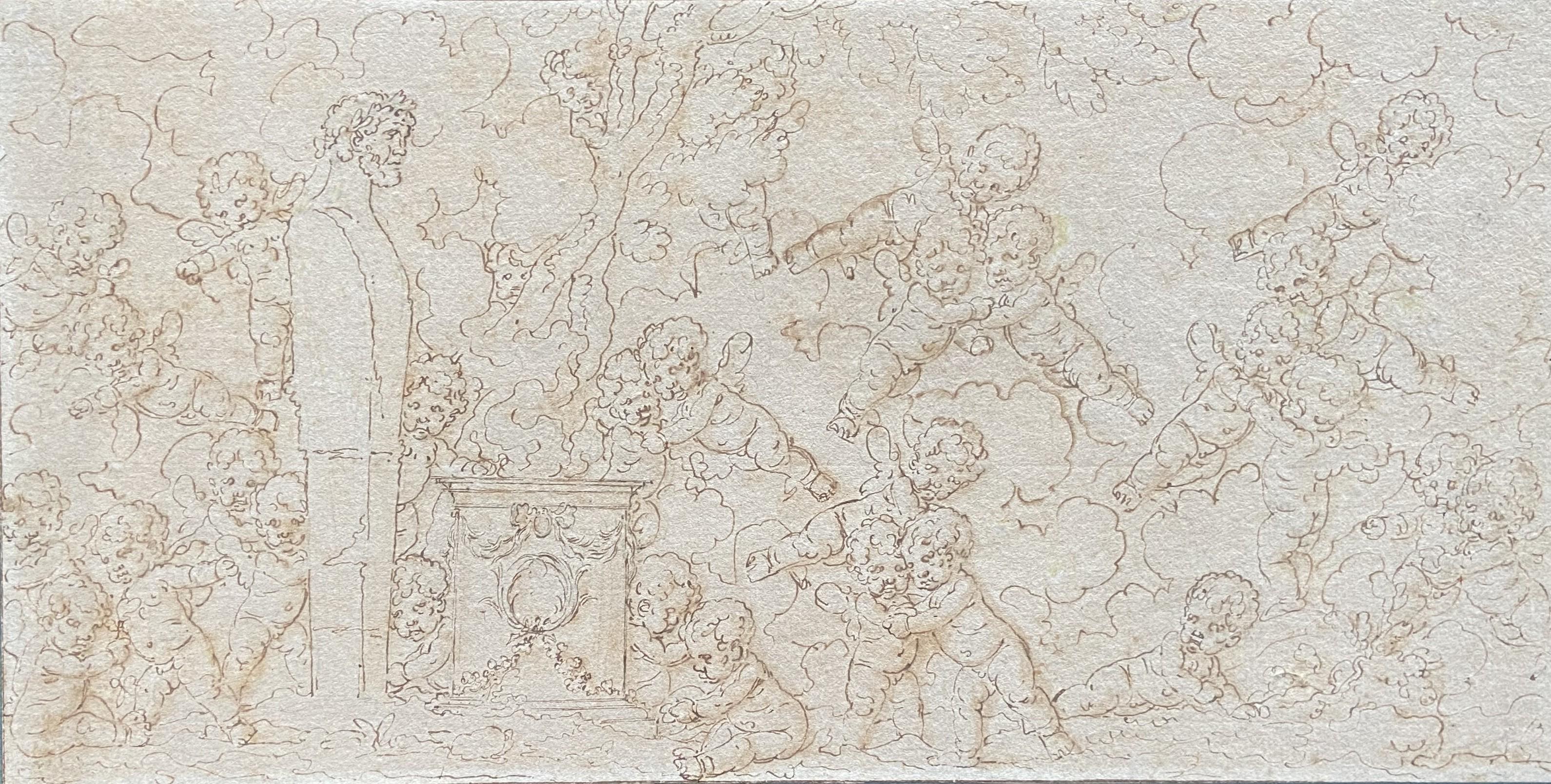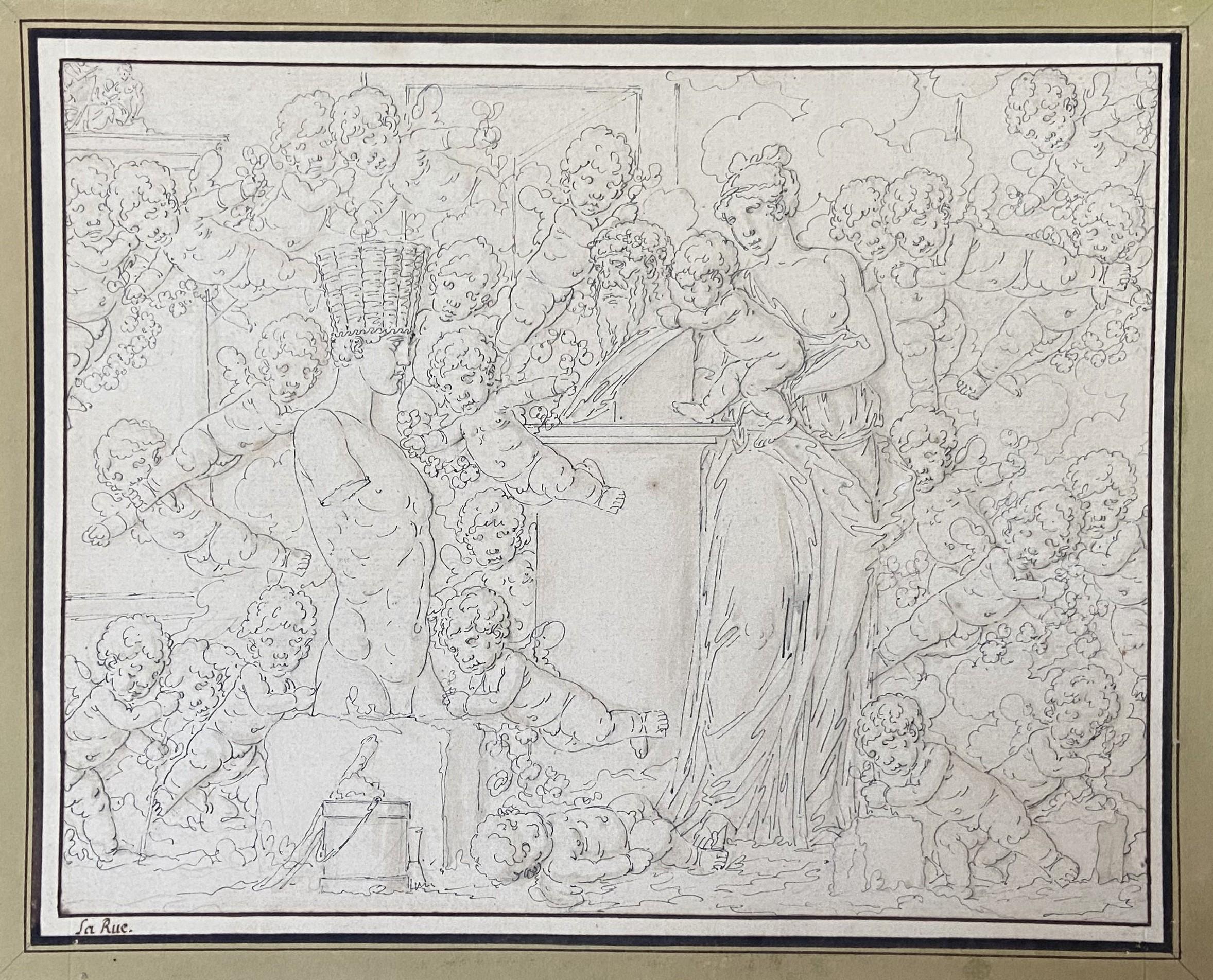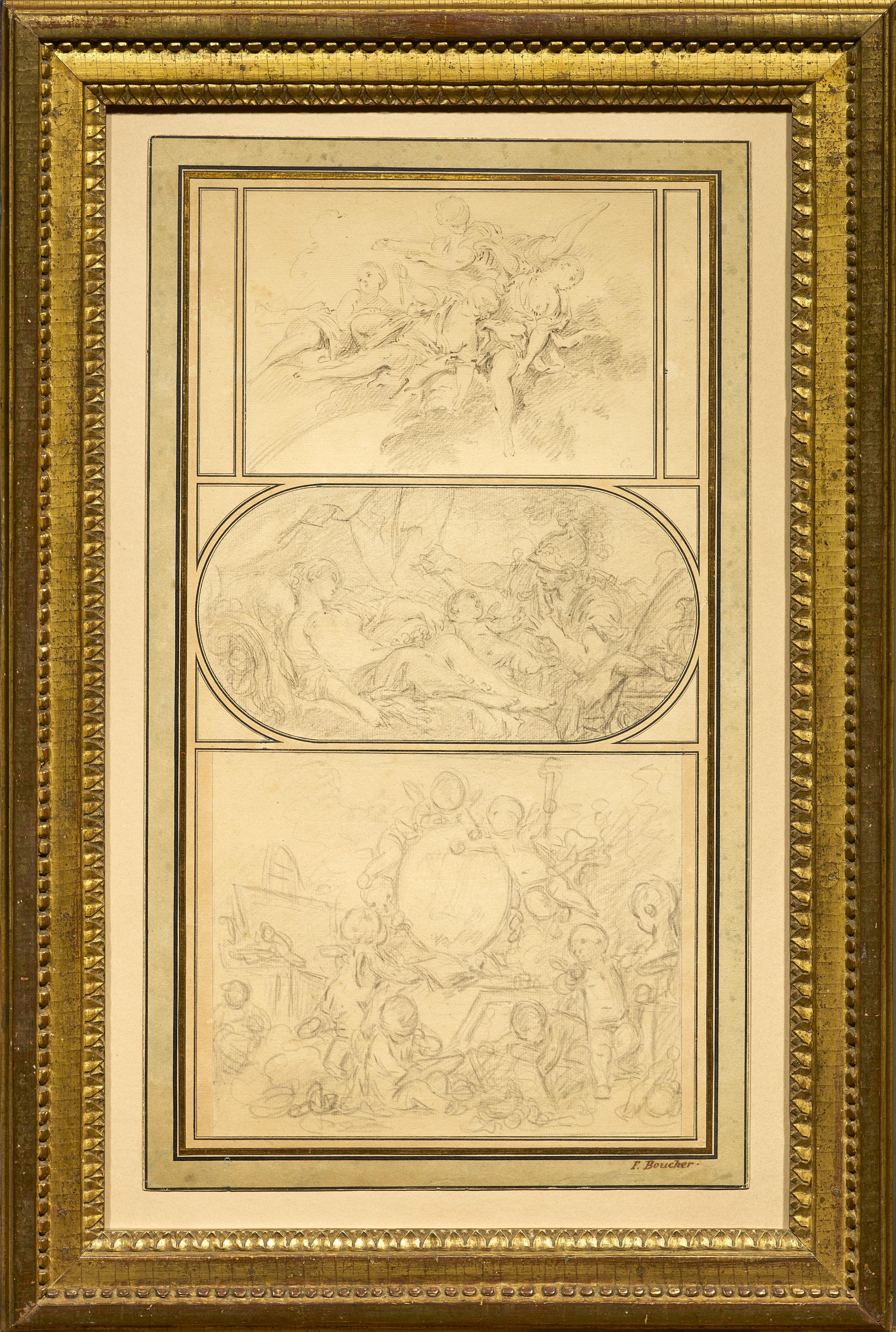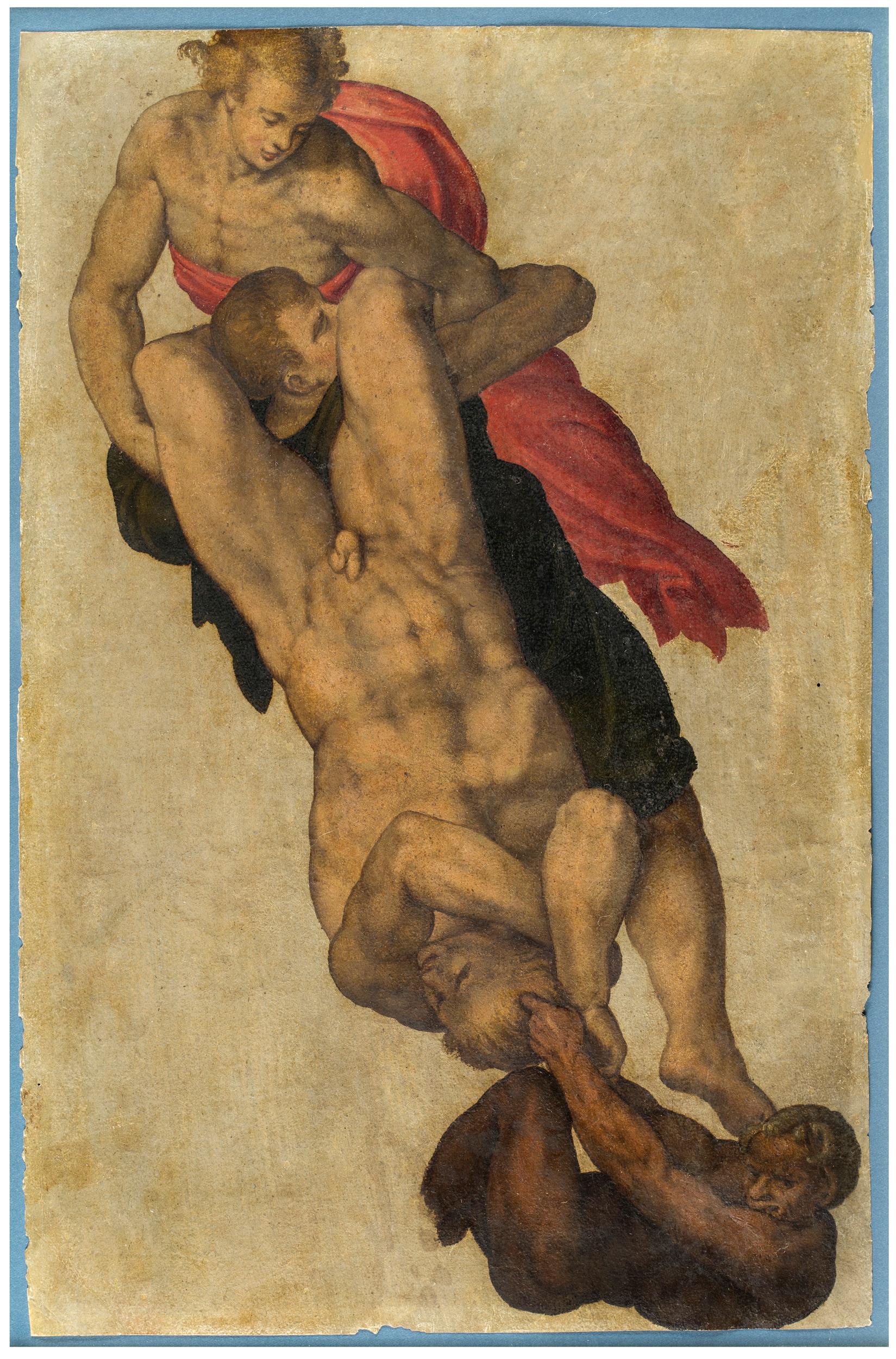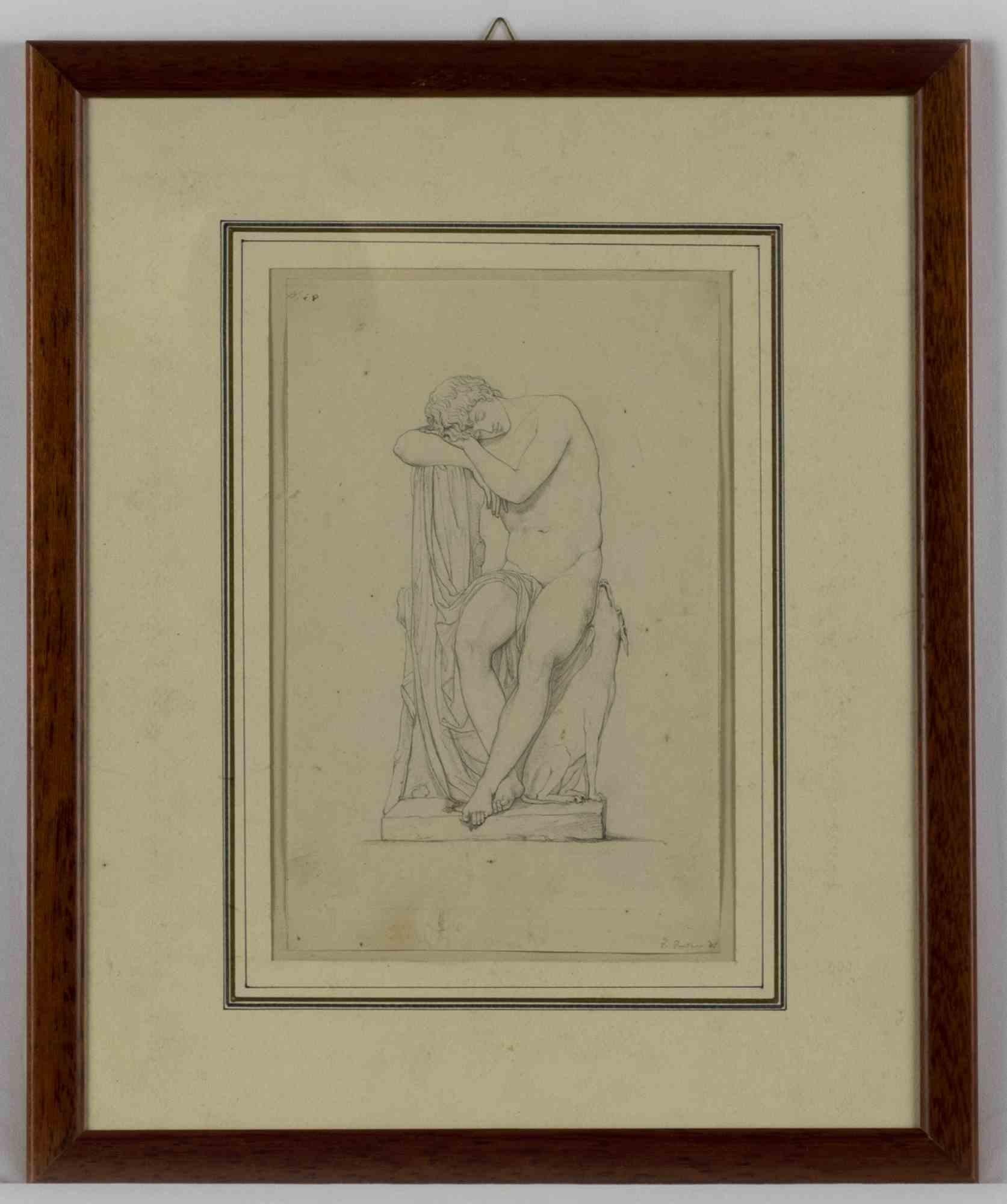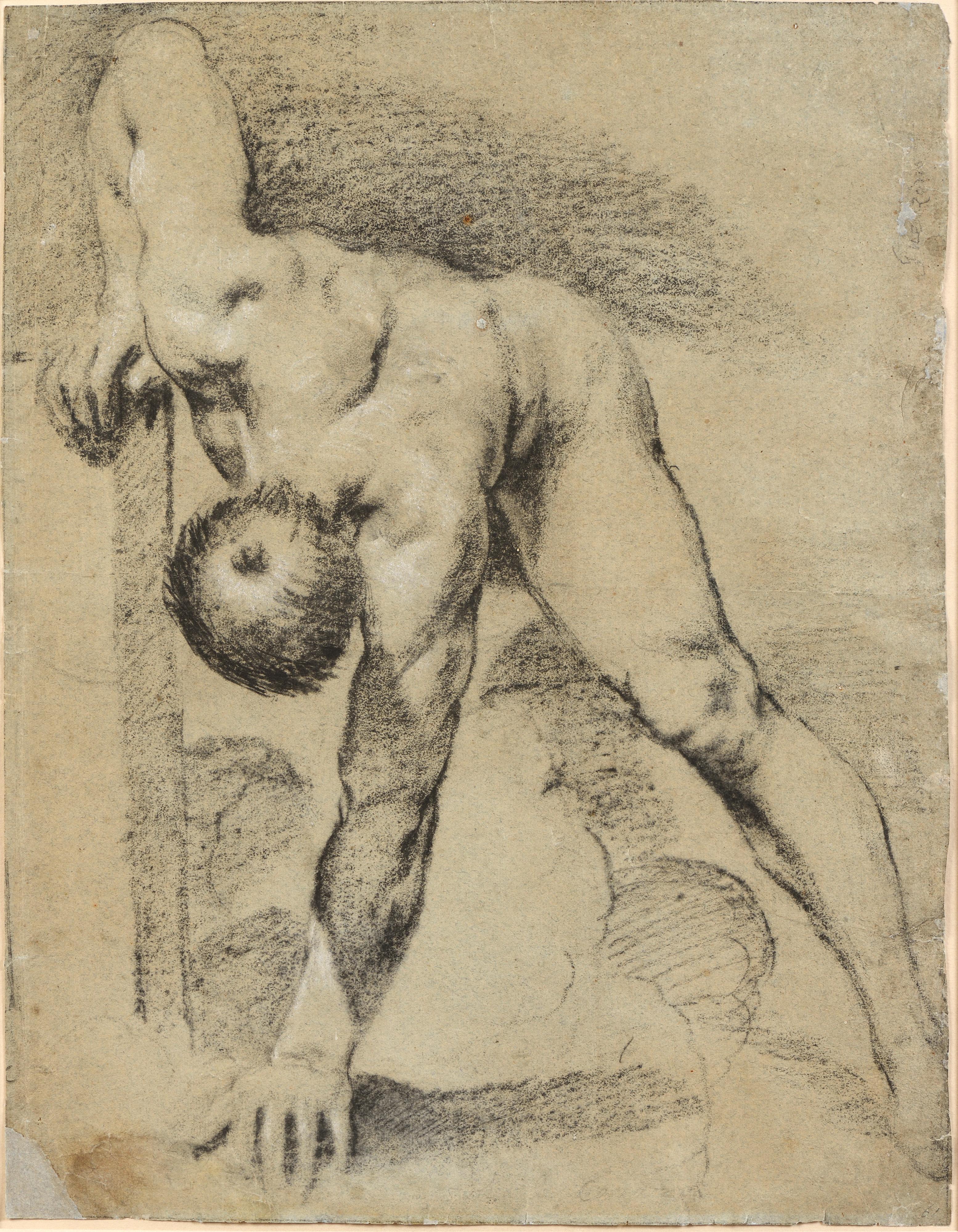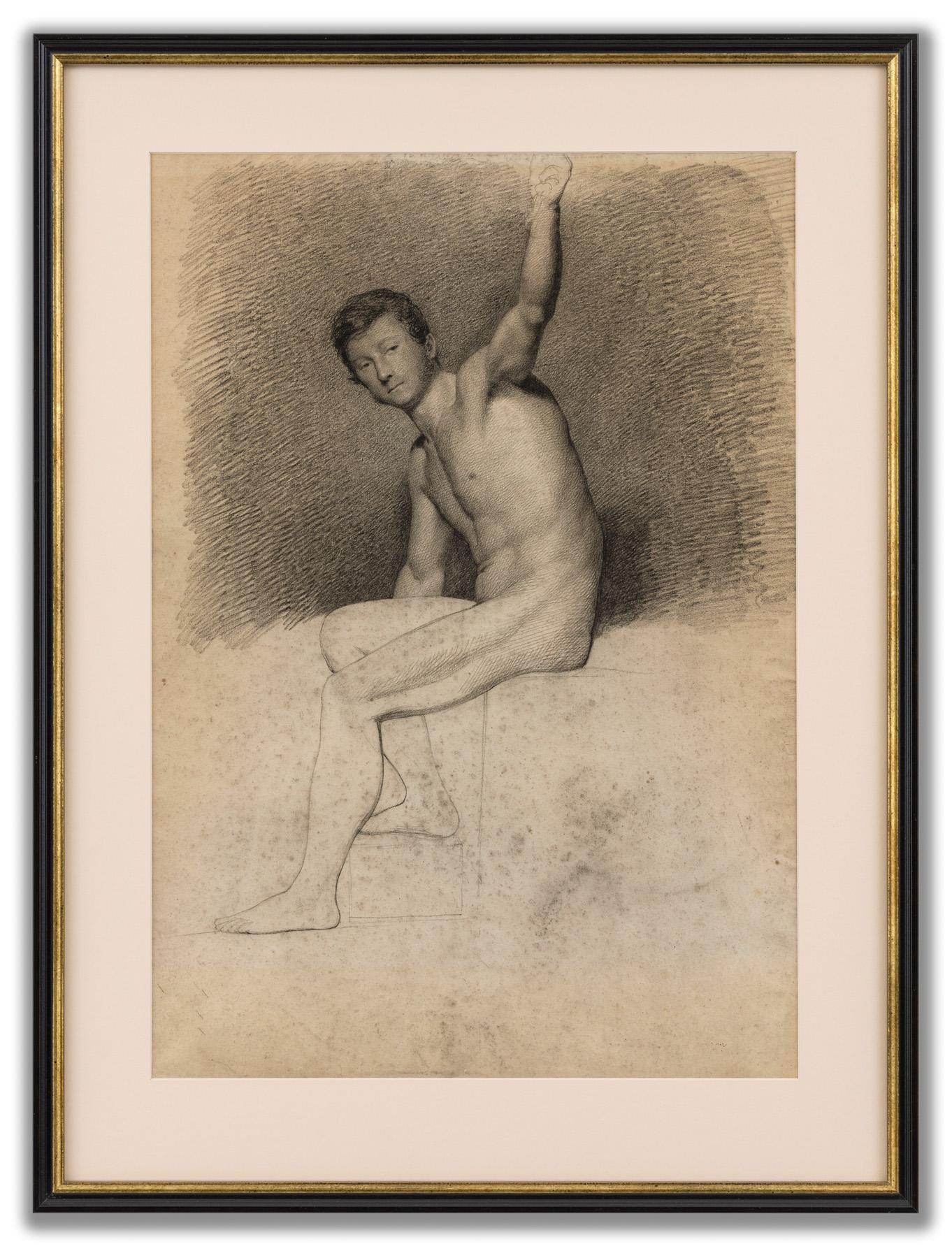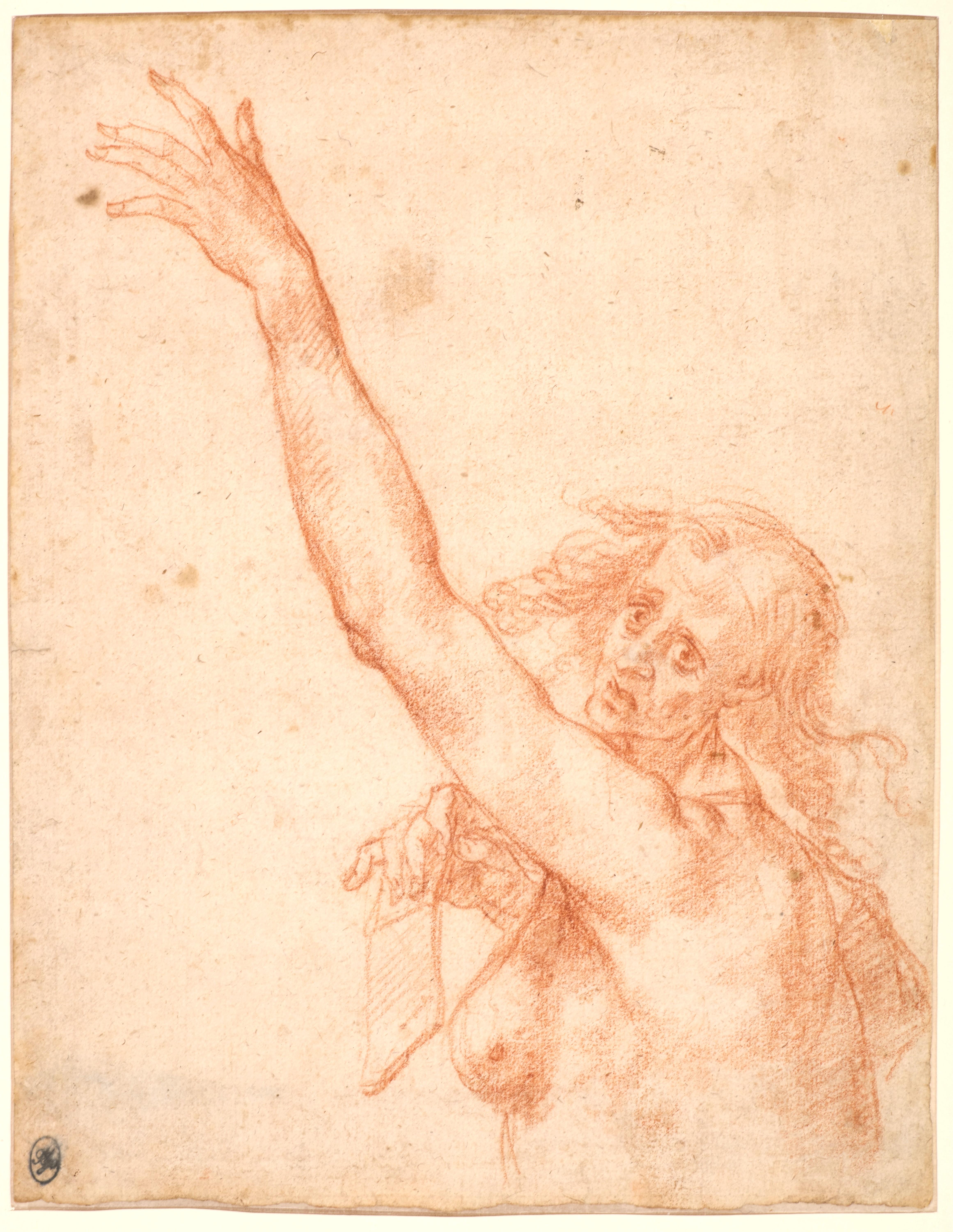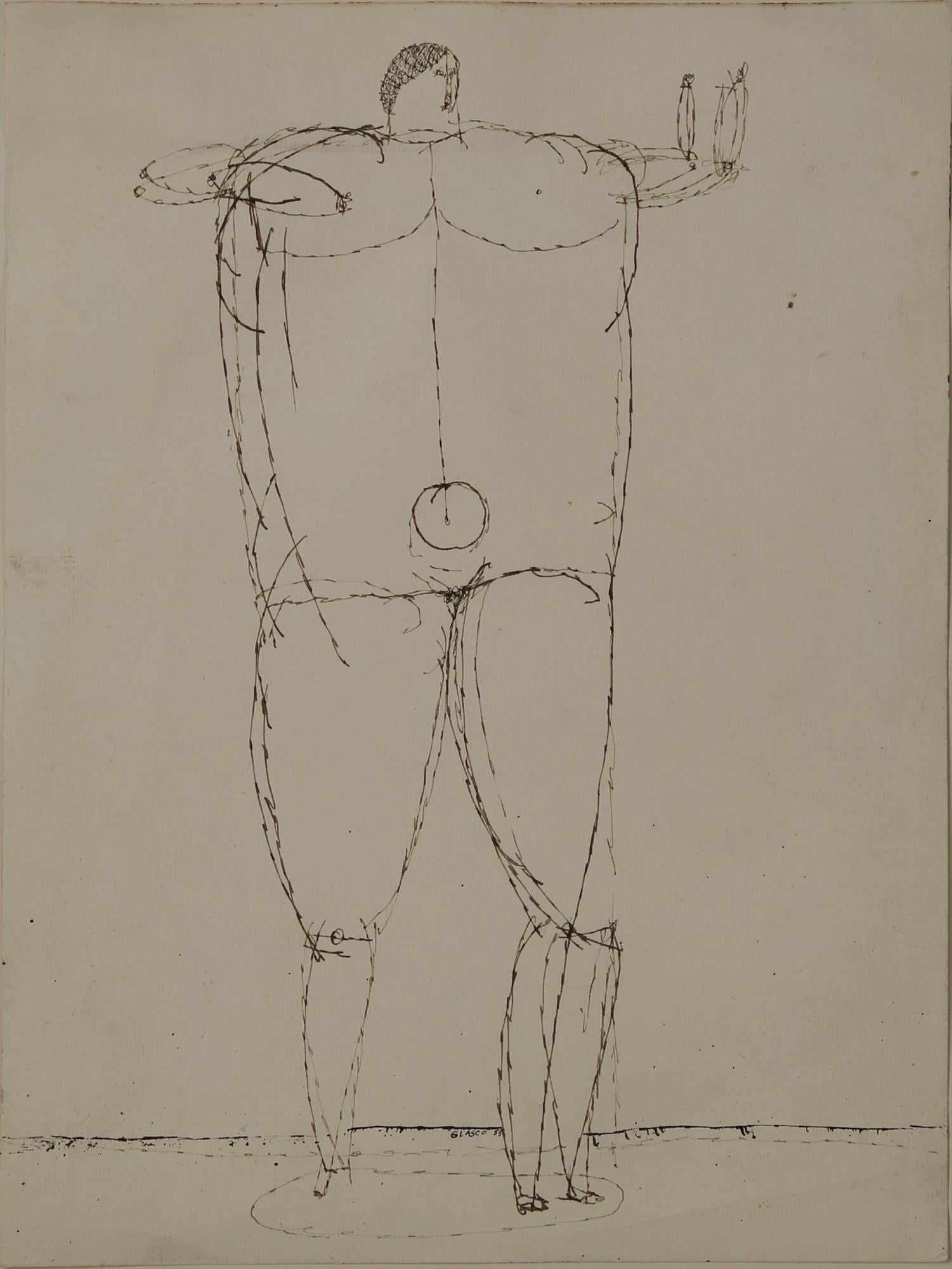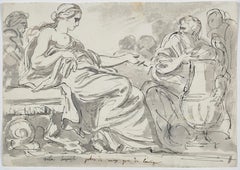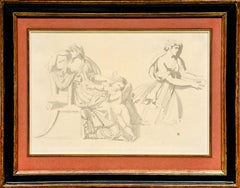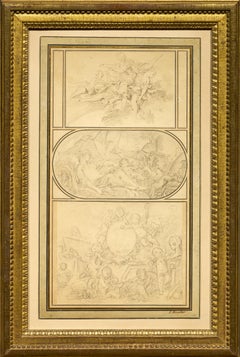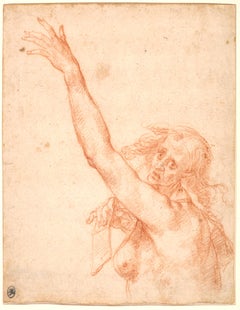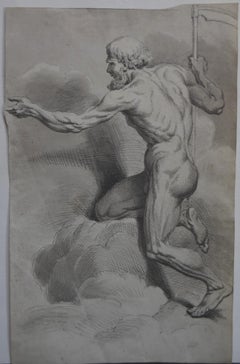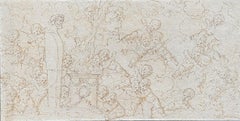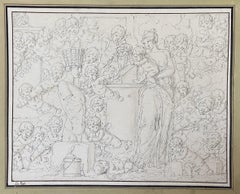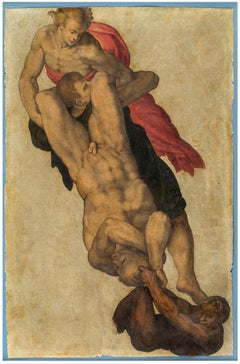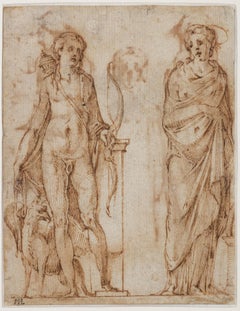
Apollo and the Muses, a Renaissance drawing attributed to Girolamo da Carpi
View Similar Items
Want more images or videos?
Request additional images or videos from the seller
1 of 10
Apollo and the Muses, a Renaissance drawing attributed to Girolamo da Carpi1532-1534
1532-1534
About the Item
- Attributed to:Girolamo da Carpi (1501 - 1556, Italian)
- Creation Year:1532-1534
- Dimensions:Height: 4.94 in (12.55 cm)Width: 3.8 in (9.66 cm)
- Medium:
- Movement & Style:
- Period:
- Condition:4 15/16’’ x 3 4/5’’ (125 x 97 mm) -Framed 12’’ x 11 1/2’’ (30.5 x 29.3 cm) Louis XVI style gilded wood frame Provenance: P.H. Lankrink (1628 - 1692) - stamped lower left (L.2090); Ullmann’s Collection, stamped on the verso.
- Gallery Location:PARIS, FR
- Reference Number:1stDibs: LU1568210862482
About the Seller
5.0
Vetted Professional Seller
Every seller passes strict standards for authenticity and reliability
Established in 2020
1stDibs seller since 2021
9 sales on 1stDibs
Authenticity Guarantee
In the unlikely event there’s an issue with an item’s authenticity, contact us within 1 year for a full refund. DetailsMoney-Back Guarantee
If your item is not as described, is damaged in transit, or does not arrive, contact us within 7 days for a full refund. Details24-Hour Cancellation
You have a 24-hour grace period in which to reconsider your purchase, with no questions asked.Vetted Professional Sellers
Our world-class sellers must adhere to strict standards for service and quality, maintaining the integrity of our listings.Price-Match Guarantee
If you find that a seller listed the same item for a lower price elsewhere, we’ll match it.Trusted Global Delivery
Our best-in-class carrier network provides specialized shipping options worldwide, including custom delivery.More From This Seller
View AllStudy in the Antique Style, a neoclassical drawing by Augustin Pajou
Located in PARIS, FR
In this lively and fresh drawing, probably taken from one of the artist's notebooks, Pajou presents us with a composition freely inspired by antiquity, as a souvenir of a visit to th...
Category
1750s Old Masters Figurative Drawings and Watercolors
Materials
Ink
Frieze of antique figures, a drawing by the sculptor Antoine-Denis Chaudet
Located in PARIS, FR
Faithful to the neo-classical taste, sculptor Antoine-Denis Chaudet presents us with a frieze of antique figures executed in gray wash over pencil strokes, which is likely inspired b...
Category
Early 1800s Old Masters Figurative Drawings and Watercolors
Materials
Paper, Pencil, Ink
Three drawings by François Boucher in a mounting by Jean-Baptiste Glomy
By François Boucher
Located in PARIS, FR
We would like to thank Juliette Parmentier-Courreau of the Custodia Foundation for her welcome and support during the consultation of Glomy’s Journal des Ouvrages.
This spectacularly large "feuille de desseins ajustés" commissioned by François Boucher from Jean-Baptiste Glomy is emblematic of the painter's art and mastery of rocaille. It is also fully representative of the taste of this period in the field of decorative arts. The largest of these three drawings, placed at the bottom of the composition, is particularly interesting: dating from around 1756, it constitutes a modello (apparently unpublished) for the frontispiece of the "Catalogue des tableaux de Monsieur de Julienne"), preserved in the Morgan Library in New York.
1. François Boucher, the master of French rocaille
The extraordinary career of Francois Boucher was unmatched by his contemporaries in versatility, consistency and output. For many, particularly the writers and collectors who led the revival of interest in the French rococo during the last century, his sensuous beauties and plump cupids represent the French eighteenth century at its most typical. His facility with the brush, even when betraying the occasional superficiality of his art, enabled him to master every aspect of painting – history and mythology, portraiture, landscape, ordinary life and, as part of larger compositions, even still life. He had been trained as an engraver, and the skills of a draftsman, which he imbued in the studio of Jean-Francois Cars (1661 – 1738), stood him in good stead throughout his career; his delightful drawings are one of the most sought-after aspects of his oeuvre.
As a student of Francois Lemoyne (1688 - 1737), he mastered the art of composition. The four years he spent in Italy, from 1727-1731, educated him in the works of the masters, classics and history, that his modest upbringing had denied him.
On his return to Paris in 1734, he gained full membership of the Royal Academy of Painting and Sculpture with his splendid Rinaldo and Armida (Paris, Musée du Louvre). Although, throughout his career, he occasionally painted subjects taken from the Bible, and would always have considered himself first as a history painter, his own repertoire of heroines, seductresses, flirtatious peasant girls and erotic beauties was better suited to a lighter, more decorative subject matter. His mastery of technique and composition enabled him to move from large scale tapestry...
Category
1750s Old Masters Figurative Drawings and Watercolors
Materials
Chalk, Ink
Study of a Fate at mid-body, a red chalk attributed to Giovanni da San Giovanni
Located in PARIS, FR
This spectacular red chalk drawing depicts an elderly woman, her eyes bulging, her hand stretched out towards the sky. This disturbing character, who seems close to dementia, and the elongation of her arm with its Mannerist overtones, plunge us into the Florentine artistic milieu of the first half of the 17th century. The proximity of this drawing to some characters in the fresco in the Pitti Palace representing The Muses, Poets and Philosophers chased from Parnassus, the last masterpiece of Giovanni da San Giovanni, leads us to propose an attribution to this artist and a dating of around 1635-1636.
1. Giovanni da San Giovanni, the painter of contradiction
We take here the title of the monography dedicated to the artist by Anna Banti in 1977, which remains the reference book for this artist. The son of a notary, Giovanni Mannozzi, known as Giovanni da San Giovanni, abandoned his studies to go to Florence at the age of sixteen, where he entered the studio of Matteo Rosselli (1578 - 1650) around 1609 and enrolled in the Academy of Drawing Arts in 1612. Around 1615 he produced his first known works, mainly frescoes for the city's tabernacles. He became famous in Florence for his originality, combining an obsessive application to the study of drawing and the reading of poetry and history with a disheveled appearance. Between 1619 and 1620 he decorated the facade of the Antella Palace in Piazza Santa Croce, a decoration that still partly survives today.
The death of Cosimo II in 1621 put an end to the Florentine building activity and Giovanni da San Giovanni left for Rome to find other sponsors with the painter Francesco Furini...
Category
17th Century Old Masters Nude Drawings and Watercolors
Materials
Chalk
Silvio and Dorinda, a drawing by Leonaert Bramer, Vermeer's first master
Located in PARIS, FR
This finely executed drawing in pen and wash is typical of the work of Leonaert Bramer, one of the most fascinating yet little-known artists of 17th-century Holland.
In a nocturnal ...
Category
1650s Old Masters Figurative Drawings and Watercolors
Materials
Ink, Gouache, Laid Paper, Pen
The Martyrdom of Saint Bartholomew, a preparatory drawing by Alessandro Casolani
Located in PARIS, FR
This powerful pen and brown ink wash drawing is a study for an altarpiece depicting The Martyrdom of Saint Bartholomew. Signed and dated 1604, it was painted at the end of his life b...
Category
Early 1600s Old Masters Figurative Drawings and Watercolors
Materials
Ink, Pen
You May Also Like
French Neo classical school, Allegory of Time, original drawing
Located in Paris, FR
Neo classical school, France, end of the 18th Century
Allegory of Time,
Pen and black ink on paper, gray ink wash
30.5 x 19 cm
irregularly shaped
In g...
Category
1790s Old Masters Nude Drawings and Watercolors
Materials
India Ink
$588 Sale Price
25% Off
Louis-Félix de La Rue (1730-1777) Putti playing around a sculpture, drawing
By Louis-Félix Delarue
Located in Paris, FR
Louis-Félix de La Rue (1730-1777)
Putti playing around a sculpture, a mythological scene
Pen and brown ink on paper
15.4 x 31 cm
In good condition
The ancient mount has has a smal...
Category
1770s Old Masters Figurative Drawings and Watercolors
Materials
Ink
Louis-Félix de La Rue (1730-1777) A Mythological scene, drawing
By Louis-Félix Delarue
Located in Paris, FR
Louis-Félix de La Rue (1730-1777)
A Mythological scene
Pen and black ink on paper
Bears an old inscription with the name of the artist on the lower left bo...
Category
1770s Old Masters Figurative Drawings and Watercolors
Materials
Ink
Study after Michelangelo’s “The Last Judgment”
By Michelangelo Buonarroti
Located in New York, NY
Italian School, 16th Century
Provenance:
Private Collection, New York
This intriguing drawing is a study by an anonymous 16th-century Italian artist after a vignette in Michelangelo’s fresco of The Last Judgement in the Sistine Chapel. The altar wall of the Sistine Chapel was already richly decorated when Pope Clement VII commissioned Michelangelo to paint his Last Judgment...
Category
16th Century Old Masters Figurative Drawings and Watercolors
Materials
Paper, Gouache
Sleeping Boy - Drawing by Giovanni Fontana - 16th Century
By Giovanni Fontana
Located in Roma, IT
Sleeping Boy is an original modern artwork realized in the 16th century by Giovanni Fontana.
Ivory colored sheet attached on an ivory colored cardboard (...
Category
16th Century Old Masters Figurative Drawings and Watercolors
Materials
Paper, Pencil
$3,479 Sale Price
20% Off
Leaning Nude Man (recto); Kneeling Man, Hands Tied Behind His Back (verso)
By Giovanni Francesco Barbieri (Il Guercino)
Located in Paris, Île-de-France
GIOVANNI FRANCESCO BARBIERI, known as GUERCINO
(1591-1666)
Leaning Nude Man (recto); Kneeling Man, Hands Tied Behind His Back (verso)
Black chalk heightened with white on light blu...
Category
1620s Old Masters Nude Drawings and Watercolors
Materials
Chalk, Charcoal
Recently Viewed
View AllMore Ways To Browse
Master Apollo
Old Master Drawing 16th
Rosa Maria
Pope Stamp
Apollo Belvedere Sculpture
Minerva Portrait
16th Century Tapestry Panel
Antique Paintings Of Apollo
Minerva Drawing
Double Easel
16th Century Settle
Antique Bear Figures And Sculptures
Muse Melpomene
Antique Church Statuary
Paul Chalk
Carolina Wi
Original Disney Watercolor
Chinese Erotic Painting
